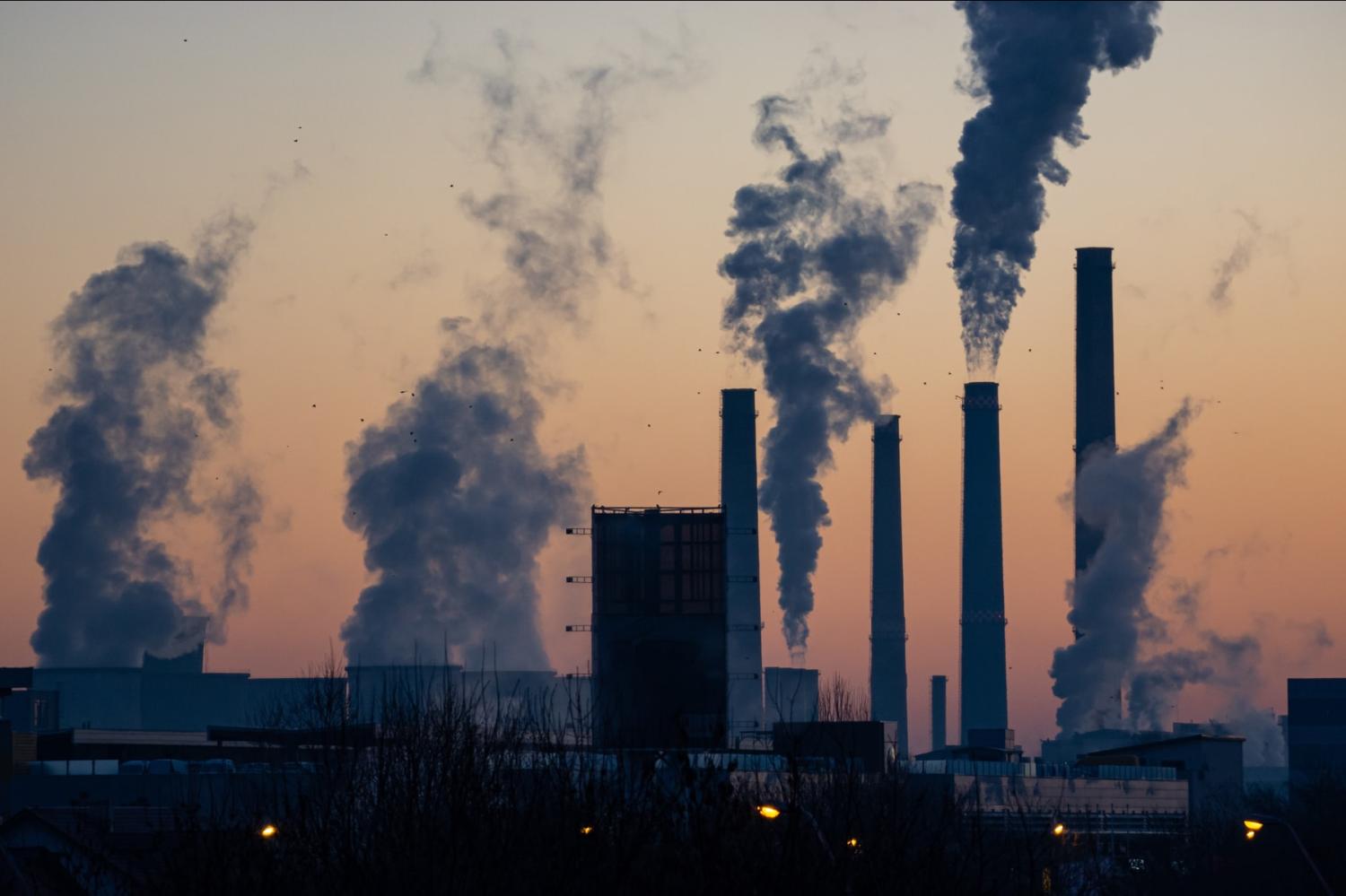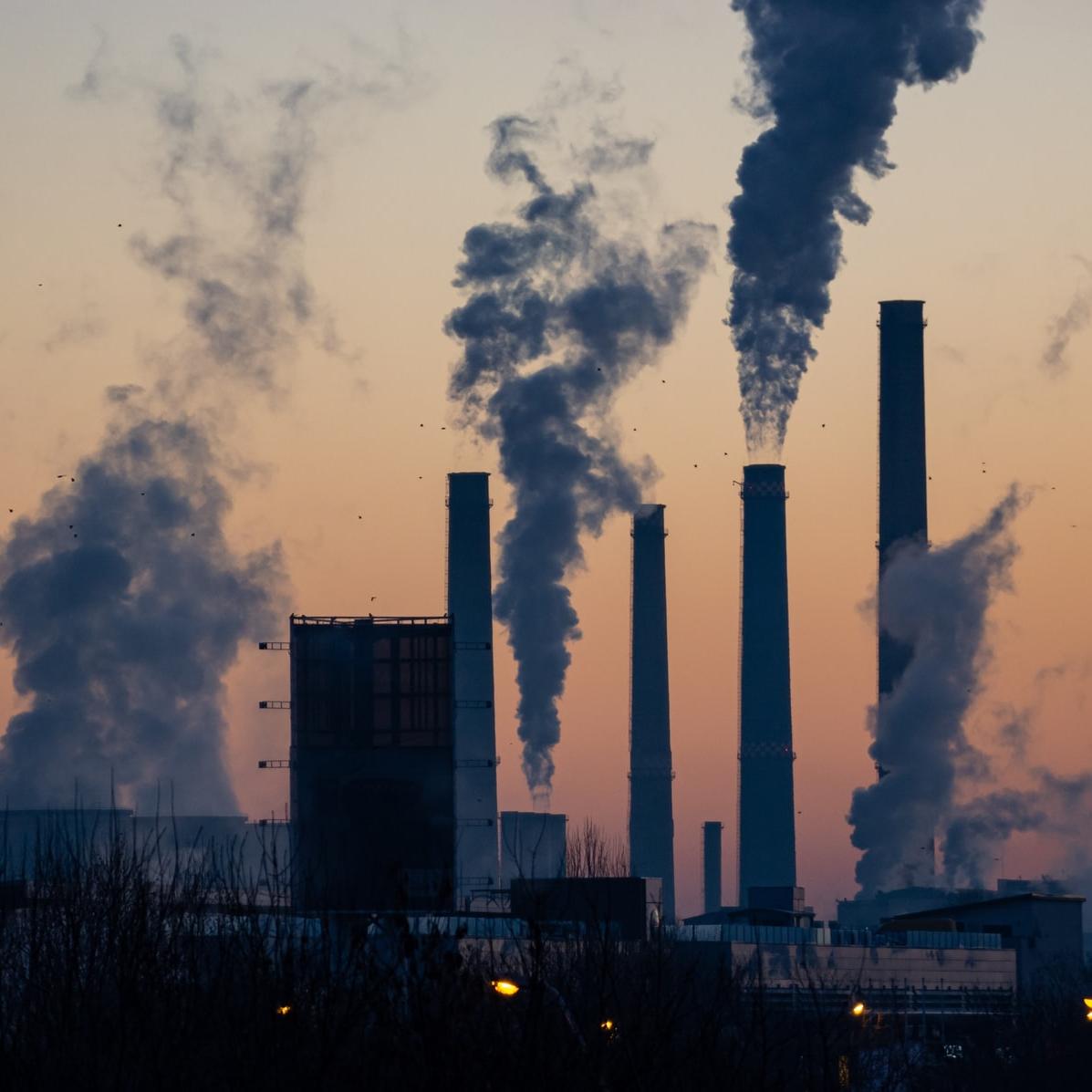Coal is Still King in West Virginia, but Solar Power is Coming on Strong


Wheeling, West Virginia, autumn 2021
When a U.S. senator with a personal stake in the coal business deploys his position in Congress to support fossil energy interests, that’s no surprise. Democratic Senator Joe Manchin of West Virginia is a case in point. Nevertheless, West Virginia’s solar energy profile shows signs of sudden growth, and a new surge of activism could help accelerate the state’s inevitable transition to clean power.
A slow start for renewable energy in West Virginia
Fossil energy stakeholders have exercised an outsized influence over energy policy in West Virginia for generations. The picture is complicated by a measure of competition between coal, oil and gas interests. However, in terms of climate action the end result is the same. Even as other states in the same region have begun to add more renewable energy to their power generation mix, West Virginia has lagged behind.
The Solar Energy Industries Association currently ranks West Virginia down at 48th among the 50 states for installed solar capacity. SEIA also counts only 311 solar industry jobs in the state.
West Virginia is one of the smallest U.S. states by population, which partly accounts for the small numbers in its solar industry. However, population only tells part of the story. SEIA notes that solar accounts for only 0.04 percent of electricity generated in West Virginia. In contrast, neighboring Virginia currently gets almost 4.0 percent of its electricity from the sun.
At a time when small and large businesses are actively seeking out opportunities to run on clean power, West Virginia’s poor showing in the solar industry could have a ripple effect that discourages employers from setting up shop in the state.
Signs of life for solar energy, thanks to an oil and gas giant
West Virginia’s own Department of Economic Development appears to recognize the bottom-line case for making the jump to clean power. The agency continues to highlight fossil energy industries as important contributors to the state’s economy, but it has also embarked on a campaign that emphasizes economic diversification.
“West Virginia’s diverse economy has moved beyond our history of resource extraction to include a robust array of products and services,” they explain.
They also take note of a recent change in state law aimed at smoothing the way for large-scale solar development, and that appears to be a game-changer.
Editor's note: Be sure to subscribe to our Brands Taking Stands newsletter, which comes out every Wednesday.
Just last week, the Atlanta-based solar startup SEVA WV announced the proposed SunPark development, featuring a 3,000-acre solar array on an abandoned coal mining site that sprawls across Lincoln and Boone counties in West Virginia. At 250 megawatts, that one project will eclipse the entire statewide total of just 18 megawatts in installed solar capacity to date.
The new development is significant in more ways than one. Aside from its enormous size, SunPark indicates that West Virginia could be headed for an accelerated jump to solar energy. That’s because the global oil and gas firm Shell, which has been aggressively pursuing new wind and solar opportunities in the U.S. and elsewhere, is connected to the project through its acquisition of the Kansas based renewable energy firm Savion last year. Savion was selected to develop the solar portion of the project.
In another interesting twist, SEVA, Inc. tapped West Virginia native and business leader Devanna Corley as its President. Corley’s background includes growing up in a coal community. She will spearhead the SunPark development as a living example of the state’s economic transition.
Citing Corley in an editorial last week, the West Virginia news organization News and Sentinel observed that “entrepreneurs who understand the enormous potential in West Virginia can do great work toward diversifying and expanding our economy, if we let them. SEVA WV’s plans appear to be an encouraging example. Perhaps others will follow their lead.”
More renewable energy for more economic activity
As reported by West Virginia News, the new SunPark solar array will support a mixed-use industrial, lodging, recreation and hospitality complex, thus answering the question of why companies that seek clean power would choose to start a business in West Virginia.
The idea of attracting new businesses with solar power seems to have caught the attention of Senator Manchin and his Republican colleague, U.S. Senator Shelley Moore Capito. Both provided bland but encouraging media statements in support of the project.
“Investing in West Virginia’s rural communities creates good-paying jobs and spurs economic growth in the region and across the state. I am pleased by the continued investments in our communities and will work with SEVA WV to further economic development opportunities across the Mountain State,” said Senator Manchin.
“This is an exciting day for Boone and Lincoln counties, there is incredible opportunities in our communities. I would like to commend SEVA WV and this endeavor to create the SunPark that will boost our economy and expand the region for future economic development activity,” added Senator Capito.
Against the backdrop of mega-scale, business-attracting solar projects like SunPark, Senator Manchin’s efforts to assist the fossil energy industry in his home state appear doomed to fail, in time.
That time may come sooner rather than later. Environmental activists are beginning to draw media attention to an alleged conflict of interest with the Manchin family business, as underscored by the ongoing sale of waste coal to the Grant Town Power Plant.
In a widely reported action last weekend, local demonstrators and other activists blockaded the power plant to bring their case to the media.
The action added drama and a camera-friendly human dimension to the story of Senator Manchin’s role in blocking the Democratic climate action agenda. As entrepreneurs and developers continue to chart a renewable energy path in West Virginia, Senator Manchin could find himself as isolated at home as he is in the halls of Congress.
(Editor's note: An earlier version of this story erroneously referred to Savion as the parent company of Seva. The two companies are not affiliated.)
Image credit: Walter Martin via Unsplash
New Research Center Focuses on Racial Divide in Maternal Health


The U.S. healthcare sector continues to reap massive profits, with public plans such as Medicare and Medicaid having a large part in boosting those numbers. Yet many people, including Black women, still find themselves shut out of the system, and too often with tragic results.
On that point, April is National Minority Health Month, and now, it's Black Maternal Health Week, which the Black Mamas Matter Alliance founded five years ago in the group’s quest to launch deeper conversations about Black maternal health across the U.S.
Here's what this group is trying to change: A recent study led by the National Institutes of Health (NIH) found that in the U.S., the maternal mortality rate for Black women is about 3.5 times higher than that of white women. To show the data another way, the Commonwealth Fund has estimated that for every 100,000 pregnancies, 37 Black women die; further, a college-educated Black mother is at 60 percent greater risk for a maternal death than a white or Hispanic woman who completed the equivalent of less than a high school education.
The racial divide in maternal health across the U.S. isn’t a story that attracts much press attention. But while the private sector has been relatively silent about any need to ensure that Black women have the same level of access to quality healthcare, a new research center just outside of Boston seeks to change this dynamic.
Editor's note: Be sure to subscribe to our Brands Taking Stands newsletter, which comes out every Wednesday.
Last week marked the founding of the new Center for Black Maternal Health and Reproductive Justice (CBMHRJ) at Tufts University, which will be led by Dr. Ndidiamaka Amutah-Onukagha, the Julia A. Okoro Professor of Black Maternal Health at Tufts University School of Medicine.
“The opportunity to create and launch a national Center for Black Maternal Health and Reproductive Justice at this critical time will not only honor the work around maternal health equity, but also position Tufts as a leader in this field,” Dr. Amutah-Onukagha said in a public statement. “The vision of the center is to protect the Black birthing experience by advocating for quality, equitable, and respectful care in childbirth.”
Dr. Amutah-Onukagha is one of only six researchers in the U.S. who is funded by the NIH to study the racial disparities in pregnancy-related illnesses and deaths. Her work has been community-focused, as she’s made it clear that such an approach is necessary in crafting healthcare policies that can work for everyone at both the local and national levels.
Among the center’s tasks will be to train health professionals, including social workers, nurses and public health professionals. In addition, CBMHRJ has pledged to find ways to ensure that Black women can receive fair and equitable access to medical treatment that is free from the discrimination that still occurs within the healthcare space. By understanding Black mothers’ experiences and understanding the resources they need and too often cannot access, CBMHRJ seeks to narrow the racial gap in maternal care nationwide.
Image credit: Hussein Altameemi via Pexels
Investors to the World: Don’t Sell Out the Climate for Energy Security


Beyond the ongoing tragedy in Ukraine, Russia’s unprovoked invasion of its neighbor has sent food prices soaring and threatens to push more people into poverty. Rising energy prices are also causing many people and their leaders to lose sleep; just look at France’s presidential election, which is proving to be a nail-biter over many citizens’ legitimate fears of rising prices for fuel and food. Across the pond, the energy industry is pressuring the Joe Biden White House to ramp up fossil fuel production in the name of energy security, even though an executive order has banned such imports from Russia, which for the U.S. had never been a huge supplier of fuel to begin with.
It’s clear that the U.S., the European Union and NATO won’t take bolder action to stop the slaughter in Ukraine; at the same time, the EU also hasn’t stopped the flow of Russian oil and gas, which has resulted in a scenario that the U.S. CIA had predicted as far back as the early 1980s.
Now, as U.S. companies explore the possibility of shipping natural gas across the Atlantic to the EU, while the Biden administration floated trial balloons to explore procuring more energy from Saudi Arabia and Venezuela, one influential group of investors is asking: What about the world’s long-term climate goals?
A group of financial companies, insurers and pension funds, which together manage more than $10 trillion in assets, has urged governments worldwide to stick to their long-range plans and not abandon their goals in the name of energy security in order to ensure that global temperatures do not increase more than 1.5 degrees Celsius by mid-century, as policymakers agreed upon in the 2015 Paris accords.
“Choices made by policymakers now must not delay the longer-term adjustments that are needed for energy markets and infrastructure to align with the Paris Agreement and reach net-zero emissions," the Steering Group of the Net-Zero Asset Owner Alliance (NZAOA), a United Nations-convened business coalition that includes companies such as Allianz, CalPERS, Generali, Legal & General, Société Générale, Swiss Re and Zurich, wrote in an open letter late last week.
The letter does not specifically call out the invasion of Ukraine, though NZAOA does acknowledge that “heighten[ed] geopolitical tensions” are behind many policymakers’ scrambling to shore up their energy security strategies. In any event, the group insists that any additional developments of new fossil fuel sources, the infrastructure that would be paired with them, and the government subsidies that would fund such projects could result in the creation of more stranded assets in the long run, not to mention the fact such plans would scuttle any net-zero strategies and continue market distortions across the globe.
“The only approach that can and will lead to long-term energy security is a massive scaling of low- and zero-carbon technologies — including new, breakthrough technologies — and infrastructure,” the group wrote, adding that energy-efficiency tactics should be ramped up while calling for more research, specifically the “scaling” of new energy technologies.
Noting that the costs to implement solar power, wind power and lithium-ion batteries have increased in efficiency while plunging in price per unit of energy, NZAOA concluded that such a continued focus would only boost energy security in the long run and protect governments and their citizens from price volatility caused by oil and gas.
The NZAOA’s assessment comes in the wake of a report from another coalition of asset managers, the Institutional Investors Group on Climate Change (IIGCC), which represents more than 370 organizations across 22 nations that together oversees more than $54 trillion in assets. The IIGCC’s report, which does not mention the war in Ukraine at all, is a similar call to stay the course; if anything, it is making the case for even more funds to ensure that the world meets its Paris Agreement goals.
Noting that climate solutions this decade alone would require about $32 trillion in investments, the IIGCC study suggests that the private sector should do its part and fund 70 percent of those costs, or about $22.5 trillion, in order to avoid climate catastrophe by mid-century. “Institutional investors have an immense opportunity to rapidly align their portfolios with the goals of the Paris Agreement by reducing financed emissions, increasing investment in climate solutions and engaging with companies to ensure timely decarbonization,” the report concludes.
Image credit: Ella Ivanescu via Unsplash
For These Neurodiverse Business Leaders, Their Differences Are Their Superpowers


Neurodivergent people — those who have differences in brain function and behavioral traits — are often overlooked in diversity, equity and inclusion (DEI) strategies. Today that is changing, with a recognition that innovation thrives when inclusion and collaboration include the lens of neurodiversity.
Often referred to as the “invisible” disability, neurodiversity affects 15 to 20 percent of the global population. It covers a range of conditions, including attention deficit hyperactivity disorder, autism spectrum disorder (ASD) and dyslexia, which often involves difficulties with reading and spelling.
There is a growing movement to uncover the strengths of neurodiverse individuals and utilize their talents to increase innovation and productivity of society as a whole. Many companies are joining that movement, in recognition that neurodiversity offers a competitive advantage.
The movement to celebrate and bring neurodiversity into the open starts at the individual level. Allison Cramer of BMC Software, who has Asperger's syndrome, and Giselle Mota of ADP, who has dyslexia, have been ambassadors for neurodiversity in their companies. They know firsthand that the talents and contributions of neurodiverse people benefit not only those individuals, but also their organizations.
Discovering a superpower
Allison Cramer, vice president of solutions marketing for the digital service operations management business unit at BMC Software, learned she had Asperger's as an adult, after her daughter was tested and diagnosed with the condition.
Until then, she hadn’t identified as someone on the autism spectrum, but the diagnosis made sense. “That’s why it feels like my default settings are different than everybody else. It made me kinder to myself,” Cramer says. Now she has coping mechanisms for when certain social behaviors like passive-aggression are hard for her to track, “because here’s a person saying one thing and doing another, and my brain doesn’t work that way,” she says. “And why should it?”
Giselle Mota, a principal consultant for the Future of Work team at ADP, was a young child when her dyslexia was diagnosed. “I did a lot of things backwards, and saw things backwards,” she says. “I would often write in combinations of letters and numbers, and it was difficult for me to retain what I was learning.” Her first-grade teacher recognized the problem and allowed Mota to hone her strengths. “When she did that, everything unlocked for me,” she explains. “I was good at math and good at pattern detection, and this angel of a teacher had me sit beside her in class and work on side projects that used those skills. I went from being someone who was struggling to being gifted.”
Mota took advanced courses in high school, earned bachelor’s and master’s degrees, became a college professor, and founded her own businesses before joining ADP. All through that journey, “I tapped into a brilliance in myself that I didn’t know how to tap into before, my superpower,” she says. “It gave me an awareness that everyone has within them their own superpower, their own brilliance. That’s led me in my career to see people for the potential they can bring and to create the opportunities for them to be their best.”
For both Mota and Cramer, their neurodiversity has contributed to their ability to be innovative thinkers in their organizations. “Maybe I don’t say it in the way everybody wants to hear it, but I’m able to find innovative, exciting, interesting answers to questions other people weren’t sure could be solved,” Cramer explains.
How tech benefits from neurodiversity
When she was told her daughter would probably be socially awkward, and asked if she knew any socially awkward people, Cramer laughed, saying: “I work in tech. I know entire buildings of people who are socially awkward. These are my people.”
She’s not sure whether it’s because people are discussing neurodiversity more openly, or if neurodiverse people gravitate toward tech because it is more welcoming and their skillsets are more valued, but “most of my coworkers can talk to me about somebody they know who’s on the spectrum, or [share] that it touches them in some way,” Cramer tells us. The qualities she and other people on the spectrum bring to the table, like a focused ability to live in the details and to see patterns easily and quickly, are increasingly appreciated in the tech sector.
Similarly, Mota’s passion is helping organizations use artificial intelligence (AI) and adaptive technologies to help people learn better at work. It is an outgrowth of her own innate ability to “take complex concepts and break them down for people,” she says. “In the world that I work in, a space of futuristic thinking, there are a lot of technologies people are trying to get their minds around, like the metaverse, virtual reality, augmented reality, and so on. I have the ability to take all of that and make it accessible to people and to tailor it to the specific audience I’m speaking to. I’m also a great connector of thoughts, which helps when we have so many divides on different issues; it’s led me to focus on ethics and bias in artificial intelligence.”
This type of insight is hugely valuable, as the endpoint of technology is to reach as many people as possible, Mota adds. “To create a technology nowadays, it must be diverse enough to reach the mass population. Consumers are diverse, and we want to create a user experience that doesn’t leave anyone out.”
Inclusion can cascade change
For Cramer, the distinction between diversity and inclusion is important. “Diversity is, ‘I’m here,’ and inclusion is, ‘I’m accepted,’ and I have been,” she says. “The more I share about my own personal experience, the outpouring of interest has been incredible. My coworkers thank me for speaking up, [and tell me] that it made them feel comfortable about talking about their own issues.”
The awareness has also led to Cramer’s colleagues recognizing how they can be more inclusive at work. For example, when she gave presentations before large groups, and tapped her hand, a colleague thought at first it was nerves. But knowing that she was on the spectrum, he recognized that it was the bright lights and the loud noises. She acknowledged that it was her sensory issues that led to her discomfort.
“He said to me, ‘You can’t be the only one in this room who has these concerns,’ and so the next time we had a big event, they turned the volume down and did not have the same bright lights,” Cramer explains. “It didn’t detract from having a positive event, and it did tremendous things for me.” When she is leading group projects, she brings the same awareness to her teams: Recognizing not everyone will be comfortable sharing with a large group, she invites them to share one-on-one with her, in smaller groups or even in written communication.
Mota also advises companies that want to do more to embrace neurodiversity — and all types of diversity — to be certain to include people of all backgrounds in decision-making processes.
At ADP, her leadership on the issue of diversity has led to a company-wide pilot project launching later this year focused on hiring more neurodiverse people. “It is people like me who are raising their hands and saying, ‘Hey, bring more people like us to work.’”
This article series is sponsored by BMC Software and produced by the TriplePundit editorial team.
Image credit: tongpatong/Adobe Stock
Get Pumped as The Body Shop Adds Refill Stations to U.S. Stores


We’ve got no shortage of stories about the effects our addiction to plastic has had on the globe. The results have included garbage patches in the ocean, litter strewn along waterways and beaches, and even microplastics lodged within human bodies. Retailers and brands have been a huge part of this problem, and they need to stop placing blame on consumers and government and instead be a part of the solution. To that end, The Body Shop says it has a plan underway for many of its U.S. stores.
The personal care products retailer announced late last week that it would install refill stations across the U.S., with the goal to have just under half (49 percent) of its stores participating in the program by the end of this year. Meanwhile, The Body Shop says it will have such refill stations in a majority of its stores worldwide by 2026.
The company claims that refill stations in 400 stores across the globe have prevented the consumption of 3.7 tons of plastic, or about 170,000 plastic bottles, so far. Another 400 refill programs are expected to start in more of The Body Shop’s locations during 2022.
Customers of The Body Shop who are interested in checking out how the refill program works can visit the company’s website and see if a refill station, easy to find within a store as it would be marked by rows of aluminum bottles, is available at a retail location near them. Depending on the type, refills of shower gel, hand wash or haircare are priced at $8 or $9, saving consumers a few dollars if they forgo buying yet another new plastic bottle.
This shift at The Body Shop comes at a time when more brands and retailers are scurrying to be a part of the nascent circular economy. In the beauty products center, as it turns out bottles of revitalizing cream may be good for one’s complexion but not necessarily for the planet, Chanel recently peeled off (all right, kicked off) its first refillable product. Budget-minded Target shoppers can now find items such as lip balm in tins instead of plastic, or body wash sold as strips in refillable containers. The emphasis on reuse, or at least recycle instead of refuse (as in trashing the planet), is taking on other forms as well.
Colgate, for example, has rolled out toothpaste in tubes that the company says are 100 percent recyclable. Berlin-based Grover recently raised hundreds of millions of dollars in funding for its subscription-based consumer electronics service. And, as food waste still proves to be a stubborn problem that won’t go away largely due to an emphasis on how such products appear, there’s a good chance someone on your Facebook feed has shown off their Misfits Market stash or Imperfect Foods haul.
Image credit: The Body Shop media release
The Connection Between Trauma in Ukraine and Empathy in the Workplace


A protest against Russia's invasion of Ukraine in Bielefeld, Germany, February 2022
Diana Blažaitienė, who works out of Vilnius, Lithuania, recruits women from Ukraine for jobs.
As the recruitment and personnel rent solutions (temp hiring) expert at Soprana Personnel International (SPI), Blažaitienė has unfortunately seen it all. Many of her clients are those who are recently displaced from areas within Ukraine as a result of the war with Russia. SPI provides Scandinavian technical and administrative personnel recruitment services offshore and onshore in different career fields.
While these refugees do need employment, stresses in the form of depressive moods and anxiety, and all the accompanying tentacles associated with grief, can have a 24-hour effect on their mental health. Blažaitienė emphasized the importance of mental health services at work, not as an add-on, but as an essential offering for traumatized workers.
Beyond Ukraine: The business case for empathy
“Empathy in this situation is essential and proves to be one of the most important skills of leaders, nowadays more than ever. So in such cases, leaders need to hear what is the best way for the team members to feel better,” Blažaitienė explained in a recent interview with TriplePundit. “Maybe they need a reduced workload, more days off; to be able to share their feelings and emotions with HR specialists, colleagues, or get professional help. It's crucial not to leave vulnerable people alone and reassure them that they can feel safe at work as much as it's possible.”
For one employee who had recently relocated to Lithuania from Ukraine, Blažaitienė arranged for counseling and local remedies such as manual treatment (think yoga) and “energy balance,” or meditation.
“Therapy, meditation, and communication with my family and friends in Ukraine helped me the most," the employee said in an email exchange with 3p. "It is important to understand that you are the one responsible for your life and wellbeing. It is not a shame to take care of yourself.”
The workplace and mental health
In the United States, issues relevant to mental health in the workplace have been a recurring theme, and the numbers seem to bear out that concerns are warranted.
According to a recent Gallup survey, U.S. workers are some of the most stressed out in the world. Some 57 percent of U.S. workers reported feeling stress on a daily basis, compared with 43 percent of people globally.
And it isn’t just the implications of the war between Russia and Ukraine on U.S. global relations, or even the pandemic that has deflated the mental health of workers, but “all of the above." The visual images of the conflict, job displacement, disruption of the family, family support systems such as schools and daycares failing, and a society faltering under racial tensions and homeland security threats all leave workers feeling unwell.
Jim Harter, Gallup’s chief workplace officer, suggests five elements employers can focus on to improve employee engagement and help individuals thrive: career well-being, social well-being, financial well-being, physical well-being and community.
Four necessary steps to cope with employees’ mental health
But Blažaitienė suggests a more interactive reaction to an employee who is suspected of being in distress, with four steps to implement in confronting issues head-on.
Acknowledgment of the situation: The message from company leadership should be that of open support and understanding that everyone might be experiencing various emotions.
Teaching employees to recognize the symptoms of stress in colleagues: Changes in behavior, mood or dress can be signs of emotional distress.
Encouraging employees not to “doomscroll:” Motivate people to focus on what they can do: donate, join a support initiative, volunteer, etc., rather than a continuous focus on the headlines.
Reminding workers of the variety of resources available to them: Employers should make accessing information about mental health help easy and confidential for its employees.
It might be said that Harter’s suggestions are strictly “American,” and in keeping with a culture that instructs, “Don’t bring your problems to work.” And although in times past, what was personal and professional was to remain as segregated as church and state, another Gallup poll indicated that younger generations expect their workplaces to provide more support than just a paycheck.
There is, however, a relevant question arising from the comparison between Harter’s and Blažaitienė’s recommendations: Does corporate social responsibility (CSR) in the U.S. extend to concern for mental health in the workplace? CSR easily boils down to diversity, equity and inclusion (DEI), sustainability and climate consciousness. And no DEI program worth its salt excludes persons based on race, sexual orientation, religion and ethnicity. But will mental health and its associated disabilities ever have a seat at the same table as a person missing a limb?
Nearly one in five U.S. adults lives with a mental illness; that is 52.9 million people — a compelling number that should inspire corporate leaders to find a way to make mental health in the workplace mainstream within CSR.
Image credit: Noah Eleazar via Unsplash
How One Firm Makes Sustainability Planning a Reality for Businesses


A wind power installation near Stockton, CA
A self-described serial entrepreneur, Alex Lassiter founded the climate technology company Green Places in order to make sustainability a reality for businesses that are serious about investing in renewables and emissions reductions, but need help with that first step or the next step in the process.
Green Places offers its clients a four-step sustainability plan, including suggestions for creating a "green team" — an internal group of employees that would shepherd the plan. Lassiter described his product as an unduplicated offering in the industry that simplifies the importance practice of climate consciousness.
“Green Places is an all-in sustainability software,” Lassiter said, “and we act as an extension of a company’s sustainability team. We serve as a holistic sustainability team for companies. Our innovative platform provides companies with all the needed tools to address climate change in a simple and accessible way. We know the best practices to reach climate compliance and help your business get there to ensure you’re on the right path.”
In practice, the company’s sustainability plan folds out like a roadmap for any business to follow and consists of four steps: measure, reduce, remove and communicate.
“Green Places helps companies measure their carbon footprint, reduce their emissions, remove carbon from the atmosphere, and communicate their progress internally and externally,” Lassiter explained.
“Our tool serves as the central record of truth for a business’ sustainability claims, ensuring that every business we work with is documenting all of their initiatives in one simple place,” he continued. “This makes it easy for reporting out to stakeholders like customers, employees and investors. We also offer our clients a variety of materials they can use to showcase and communicate their sustainability efforts including a ready-made sustainability webpage.”
For many businesses, it’s that first step in the process which is unknown and cause for consternation. Green Places takes the question out of where to begin.
“First, we calculate your carbon footprint to understand the sources of your emissions. Once we know that, we can help you set reduction goals. This can be done within the platform and included on your sustainability profile that we create for you,” Lassiter told TriplePundit. “If your goal is carbon neutrality, we can also help you source third-party verified carbon offsets. Over time, our software will track your progress and our team of sustainability experts will assist you along the way.”
He added: “You would have full access to our team no matter where you’re located. We’re available for regular calls and collaborations. We also like to help boost our client’s marketing initiatives, so we often share social media posts and conduct video interviews.”
Each plan is tailored to the organization’s particular needs, and in general it takes a couple of months to conduct a carbon assessment and build a solid sustainability plan.
Green Places recently announced a partnership to provide services to Siebert Williams Shank (SWS), the nation’s largest and highest ranked MWBE (minority- and women-owned enterprise) investment banking firm with headquarters in New York and California and 14 regional offices around the country. The sustainability plan for SWS includes a goal to achieve carbon neutrality by 2030 and help underserved communities by addressing climate inequality along the way.
Since Siebert Williams began the partnership with Green Places in July 2021, the firm has mitigated 1,189 metric tons of carbon.
The consequences of unnatural climate change are becoming increasingly visible. In February 2021, an iceberg broke off the Brunt Ice Shelf in Antarctica that was larger than New York City. And clearly, businesses cannot count on forever avoiding legislation that will make voluntary changes mandatory, and expensive, in the near future.
For example, the U.S. Securities and Exchange Commission (SEC) has proposed a rule that would require standardized greenhouse gas reporting for publicly-traded businesses. In California, the proposed Climate Corporate Accountability Act (CCAA) would require Scope I, Scope 2 and Scope 3 emissions reporting for companies with more than $1 billion in annual revenue.
And the most recent reporting from the United Nations’ Intergovernmental Panel on Climate Change (IPCC) painted a stark picture of the continuing rise of greenhouse gases.
Whether or not the Earth survives mankind is a political question for those who consider profit over planet. However, optimistic climate impact stories end with a nod to willpower and willingness rather than partisanship.
Image credit: Levi Meir Clancy via Unsplash
Greenwashing Indeed Comes in All Colors


The new SEC rules provide a roadmap for pulling ESG (environmental, social and governance) reporting into the mainstream, with standardized methodologies leading to improved transparency. In the meantime, though, investors who are determined to put their dollars into planet-saving commercial endeavors need to look behind the corporate rhetoric, take a close look at any greenwashing and consider how a company fits into the big picture.
There’s bright green greenwashing …
ExxonMobil provides one of the more obvious cases of greenwashing, which refers to the practice of highlighting the eco-friendly aspects of a company in order to deflect attention from other not-so-friendly elements.
The energy giant is well-known as one of the leading financial backers of the climate denial lobby, though in recent years the company has focused less effort on providing direct funding to lobbying activities.
Further, ExxonMobil is also among the shrinking number of oil and gas stakeholders that have failed to invest significant resources in proven renewable energy technology, like wind or solar energy. Instead, touts its involvement in the controversial area of carbon capture. The company also highlights its longstanding algae biofuel research program, an area that has yet to bear fruit.
That is greenwashing, plain and simple.
… and then, there’s the “other” greenwashing …
It’s relatively easy for serious ESG investors to avoid companies like ExxonMobil. The more difficult task is to unpack the role of CEO’s and board members who control stakes in multiple companies.
With his high public profile and constant presence on social media, Elon Musk provides one such example. To his legion of fans, Musk is a planet-saving force of superhero proportions, mainly through his investment and continuing leadership role in Tesla Motors, the electric vehicle (EV) company founded by Martin Eberhard and Marc Tarpenning in 2003. The company recently changed its name to Tesla, Inc., reflecting its activities in the solar energy, energy storage, and EV charging fields.
That’s all well and good in terms of helping to decarbonize the transportation sector, but from a broader perspective Tesla also serves as a convenient platform for supporting Musk’s carefully cultivated image as a visionary, maverick-y breaker of rules. His fans are quick to forgive, or simply ignore, a list of bad behaviors by the company and by Musk himself, including misdirection on COVID-19 safety and a series of allegations of securities fraud, most recently regarding his activities in cryptocurrency and Twitter.
Tesla, Inc, also serves to deflect from Musk’s SpaceX venture, which presents a raft of ESG issues including carbon emissions from the fuel used by SpaceX rockets, and environmental impacts related to the company’s footprint in an ecologically sensitive area in Texas.
Reporters who cover the technology beat are beginning to draw attention to apparent gaps in SpaceX’s environmental impact documents. They have also taken note of the company’s apparent plans to build an on-site power station and procure a large amount of natural gas, either by drilling its own wells or piping it into the Texas facility. Neither option fits the profile of a planet-saving hero.
In a possibly related matter, the media spotlight is also beginning to turn attention to the environmental effects and energy demands of cryptocurrency mining, including the impact of Musk’s preferred digital currency, Dogecoin.
… and the biggest greenwash of all.
Now that the full impacts of the climate crisis are careering into view, car culture itself has come under fire, and that is perhaps the biggest example of greenwashing of all.
For all the personal and economic opportunities fostered by car culture, the model of individual car ownership is also an exclusionary, disrupting force, whether the vehicle is zero-emissions or not.
In addition, the prospect of further clogging up city streets and other public spaces with EV charging stations has raised new issues for urban planners.
If investors like Elon Musk applied their supposed genius, public influence and financial clout to community planning, mass transportation, walkable and bike-friendly spaces and car free zones, the global economy would decarbonize at a much faster, and far more equitable pace.
Image credit: Alena Kova via Pexels
After Staten Island Union Vote, What’s Next?


After only 11 months of organizing, Staten Island warehouse JFK8 has become the first Amazon warehouse in the United States to successfully unionize. The victory came by a vote of 2,654 to 2,131 in favor of joining, with 67 ballots being challenged. Amazon Labor Union now represents the largest fulfillment center in New York.
The grassroots efforts, led by best friends Christian Smalls and Derrick Palmer, were met with great resistance from company leadership. Workers say Amazon put together mandatory warning of the dangers of unionizing. Amazon’s brief statement about the development forebodes a rough road ahead for contract negotiations. The statement reads, in part: “We’re disappointed with the outcome of the election in Staten Island because we believe having a direct relationship with the company is best for our employees.”
The next step for JFK8: Demanding eight immediate changes
It's clear that the workers at warehouse JFK8 see unionizing as a benefit to company culture. They have outlined “eight immediate changes” they'd like to see put into place as protections and benefits, including paid time off for work injuries; promotions to account for the extra work, training and skill required for some positions; and reinstating 20-minute breaks.
Palmer, who led internal efforts to organize, told National Public Radio that unionizing wasn’t necessarily an inevitable path forward: “…you know, who knows if Amazon would have treated us right? Instead of listening to our concerns, you know, during the pandemic, they decided to take their own stance." The impetus to unionize began after Smalls, the interim union president, described being wrongfully terminated for organizing a walkout due to inadequate pandemic safety conditions in the warehouse. Smalls told NPR he has already heard from 50 warehouses around the world that are interested in following in the fulfillment center’s footsteps.
Does Amazon automatically lose after the Staten Island unionization?
Amazon has been open about its mission to be "customer-centric" — some may argue to the detriment of worker treatment. But does there have to be a tug of war between company success and attentiveness to employee needs? It seems the company has already been shifting its approach toward employee welfare. In a 2020 letter to shareholders, founder and Executive Chair Jeff Bezos wrote: "Despite what we’ve accomplished, it’s clear to me that we need a better vision for our employees’ success. We have always wanted to be Earth’s Most Customer-Centric Company. We won’t change that. It’s what got us here. But I am committing us to an addition. We are going to be Earth’s Best Employer and Earth’s Safest Place to Work."
Soon after the news of the newly-minted union broke, LinkedIn announced its top companies to join for career growth. For the second consecutive year, Amazon was placed at the top. In a way, unionizing can also be seen as a vote of confidence in the company. Smalls told NPR: “You know, people got to get out of that mentality of, 'Oh, let me just quit my job.' Because when you quit your job, guess what? They hire somebody else. So you're jumping from one fire into the next, and the system doesn't get fixed by doing that." By staying, employees show that they think progress can occur.
But can Amazon actually find bottom-line benefits to having a unionized workforce?
If Amazon were to embrace the tide of unionization amongst its workforce, it could also welcome additional business benefits. For one, Amazon's turnover rate of hourly employees has been unusually high, even before the start of the pandemic — at a rate of about 150 percent a year. Hiring replacements doesn’t come cheap. Susan Schurman, who was executive director of the George Meany Center for Labor Studies, told the Harvard Business Review back in 1998 that there are also risks to challenging unionization efforts. A company could risk further souring its relationship with employees, she said.
Today, pro-union organizations such as Union Plus tout a similar outlook on the benefits unionization can have for employers. Further, the Economic Policy Institute has argued that unions are particularly crucial during times of crisis such as the COVID-19 pandemic, especially for people of color.
Almost a quarter century ago, Schurman added potential benefits that are often overlooked: "I find that dealing with union representatives is absolutely the best way to solve most of the problems related to human resources that I face on a daily basis quickly, efficiently, and to the satisfaction of all parties. I’m convinced that one of the most difficult challenges top managers face is getting honest information from their management teams about the problems that go on within their organizations."
We have yet to see what will come from the Amazon Labor Union in Staten Island. What is certain is that the needs of these employees are starting to get the attention they deserve.
Image credit: Yunsik Noh via Unsplash
Memphis Has Become Ground Zero for Predatory Lending


A trolley car on Main Street in downtown Memphis, Tennessee
Profits for the high-cost lenders who offer so-called payday loans, car title loans or flex loans overwhelmingly depend upon targeting communities of color and stripping them of their wealth, concluded a recent report on predatory lending released by the HOPE Policy Institute and the Black Clergy Collaborative of Memphis (BCCM).
According to the HOPE-BCCM report, there are currently 114 high-cost lending storefronts in Memphis, or more than twice the number of McDonald’s and Starbucks in the city combined. These storefronts are disproportionately located in Memphis neighborhoods with higher percentages of Black and Latino residents.
“These lenders prey on people who already face extraordinary financial challenges and knowingly overwhelm them with exorbitant rates and terms, creating a cycle of financial instability and poverty,” HOPE CEO Bill Bynum said in a public statement. “America’s future prosperity requires a fair and responsible financial system that increases, not inhibits economic mobility.”
Predatory lenders, say the report’s authors, hoover millions of dollars from poor communities across the nation, and in the case of Memphis most of that money leaves the state of Tennessee as well. Seventy-four of the 114 of the high-cost lenders storefronts are owned by out-of-state companies, according to the HOPE-BCCM report, and just two of these companies have 52 storefronts between them.
In Memphis, 20 percent of white households lack liquid assets, compared to more than 50 percent of Black households and more than 60 percent of Latino households in the Bluff City. These high-cost loans, through their fee extraction and economic consequences primarily concentrated in the city’s Black and Latino communities, perpetuate this gap, limit economic mobility for individuals and maintain long-standing racial and economic inequalities, the HOPE-BCCM report added.
People who live outside of these communities do not fully understand the impact of high-cost predatory lending, Bynum told TriplePundit.
“When people see these storefronts clustered on thoroughfares in certain neighborhoods, it might look like they are there to offer a convenient service, or they might generally know that the loans are probably a little bit expensive,” Bynum told 3p. “What most people likely don’t realize is just how expensive they are, such as interest rates over 400 percent, which is almost hard to be believe, but it’s true.”
Being trapped in a cycle of high-cost debt is also devastating to the physical and emotional health of these communities, said Reverend Darell Harrington, senior pastor of New Sardis Baptist Church and chair of the BCCM economic empowerment committee. Harrington told 3p that pastors and faith leaders in Memphis see predatory lending “as a purely evil element that continues to eliminate a sense of freedom and equality for those entrapped.”
“Victims of predatory lending often suffer in silence, compounding external frustration and agony, with internal fear and affliction,” said Harrington. “The stress factors and the mental duress caused by these exploitative products further exacerbate the injustices that are prevalent, primarily in underserved areas.”
The HOPE-BCCM report acknowledges the steps local government has taken to address predatory lending as well as its limited options, calls for more action from both the state and federal governments.
“State law of Tennessee currently allows lenders to charge over 400 percent. The legislature has the authority to change this, to prevent these predatory, high-cost loans which are most often aimed at people already struggling to make ends meet,” Bynum told 3p. “Lowering the costs of these loans, just like many other states have done with bipartisan support, is a common-sense step to ensuring the economic security of Tennesseans.”
Congress has the power to lower the costs of these loans nationally, Bynum said, and doing so would extend protections already in place for active-duty military personnel, which caps the rates of these loans to no more than 36 percent annually.
Congress took this action, with bipartisan support, because the “Department of Defense determined that 300 to 400 percent rate loans undermined military readiness,” said Bynum. The Veterans and Consumer Credit Fairness Act, which was introduced in November 2021, extend this protection of a 36 percent rate cap for everyone, he said. Beyond Congress, Bynum said the Consumer Financial Protection Bureau also has the authority “to take action to prevent predatory lenders from trapping people in a perpetual cycle of debt as they do now.”
“The best way to address the harms of the debt trap of 400 percent loans, is to address that directly. Doing so will require action by our policy makers at the state and federal level,” Bynum added. “The private sector can and should be a supportive voice in calling for these changes to address these practices which are so harmful to our communities.”
Image credit: Joshua J. Cotton via Unsplash